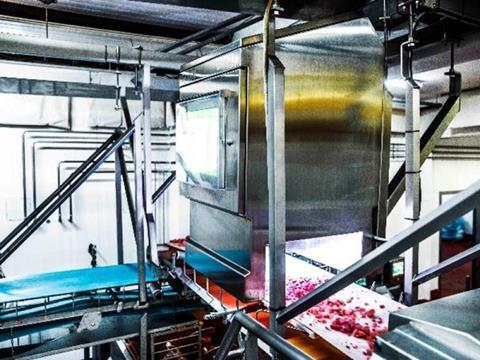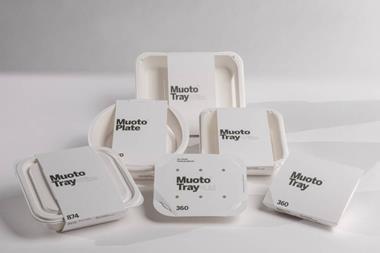
Danish Meat Research Institute introduces a new and updated version of DynaCQ at interpack 2017. The new solution ensures fully automatic detection of foreign objects in both minced meat and trimmings enabling food manufacturers to avoid recall costs and product waste.
Operators in the food industry wear aprons, gloves and protective sleeves made from low density materials like plastic. Plastic in-liners and covers are also widely used to protect products. Unfortunately, the materials occasionally get torn and small fragments can end up in the minced meat or trimmings.
Low density materials cannot be detected by x-ray or metal detectors and it is almost impossible for operators to identify small fragments in the product surface with products moving fast on the conveyor belt.
“DynaCQ solves this problem. By using a multi spectral camera with special illumination, DynaCQ detects the unwanted components and allows the processor to stop and remove small fragments which deviate from the natural colours of the product,” explains Product Manager Niels Madsen, Danish Meat Research Institute.
Automatic quality control and image storageThe fully automatic inspection helps food manufacturers meet the increasing quality requirements in the industry.
“With DynaCQ installed on top of existing conveyors food manufacturers can detect foreign objects in e.g. minced meat in trays, as well as in meat cuts, steaks, dices, pulled and processed ground products. Thus, it prevents contaminated products from reaching the consumer and makes it possible for the manufacturers quickly to take corrective actions to reduce product waste. In addition, DynaCQ provides image storage for product documentation making it easier to handle complaints.” says Niels Madsen.
The foreign object detection not only serves as an effective entry and exit control for the food manufacturers, but can also be used by the suppliers of raw materials for product quality control.
In 2017 a new DynaCQ version with a smaller footprint and wider field of view has been launched and it is already commissioned by food processors focusing on detection in coarsely ground fresh, frozen and further processed meat products.
More info:










